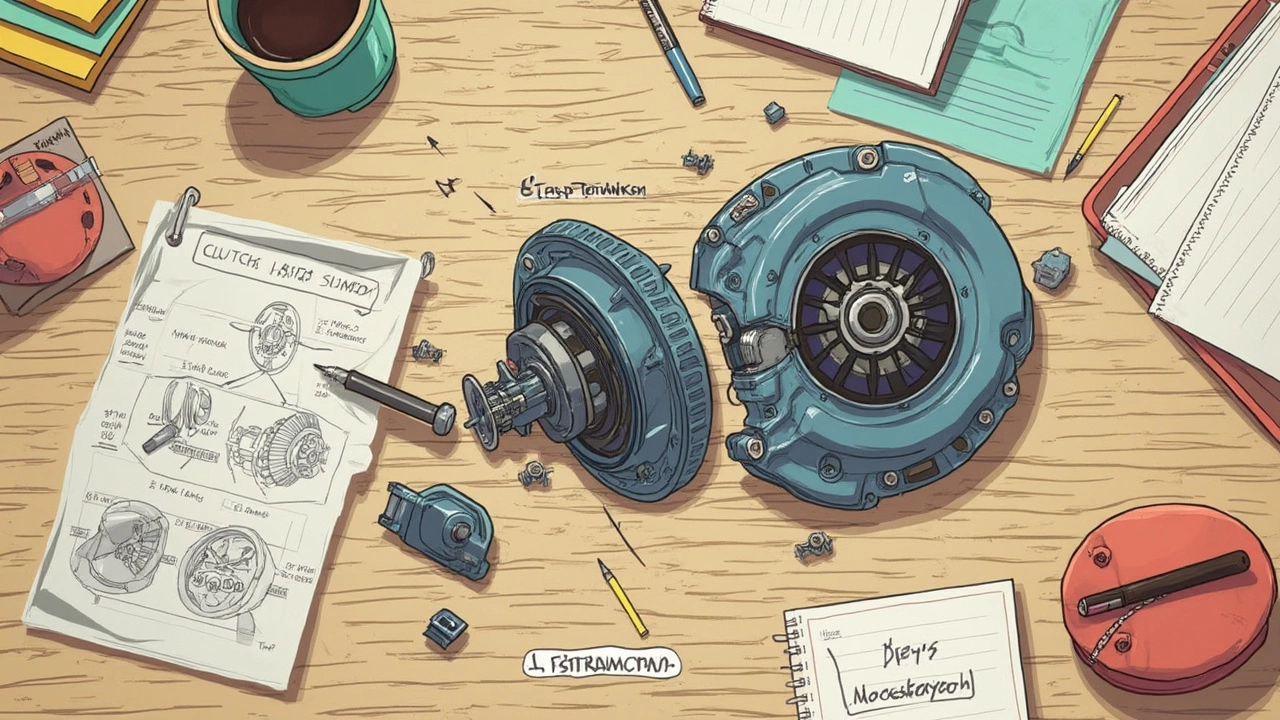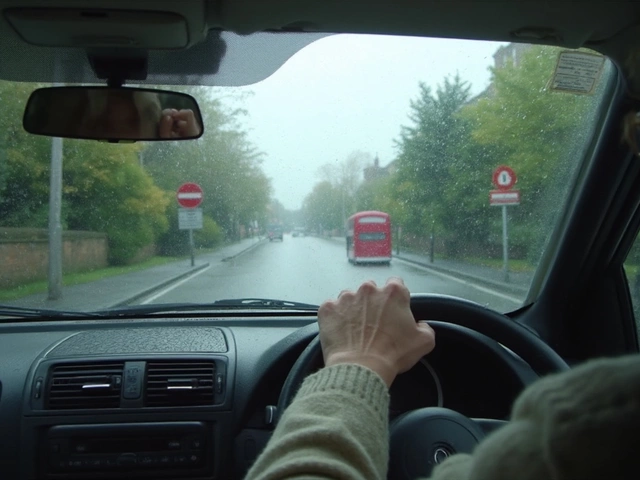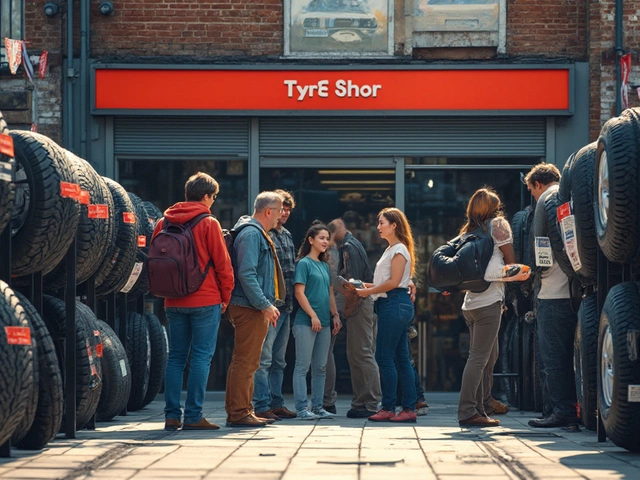So, your car's clutch is smelling a bit like burnt toast, and you're wondering about the damage to your wallet. Fixing a burnt clutch might sound scary, but knowing the costs involved can give you some peace of mind. Let's break it down.
First things first, when your clutch is toast (pun totally intended), you're often looking at the price of parts and labor. If you drive a standard car, the cost is typically between $500 and $2,500. What's with the huge range? Well, whether you're driving a compact car or a hefty truck makes all the difference.
Parts could set you back around $150 to $300. The rest of that bill? That's labor. Mechanics often charge $75 to $125 per hour, and a clutch job can easily take 4 to 6 hours.
- Understanding the Problem: What Causes a Burnt Clutch?
- Tallying the Costs: What to Expect
- DIY vs. Professional Repair: Pros and Cons
- Finding the Right Mechanic: What to Look For
- Preventative Tips: Keeping Your Clutch Healthy
- Signs It's Time for a Clutch Check
Understanding the Problem: What Causes a Burnt Clutch?
If you've ever caught a whiff of something burnt while driving, it might be your clutch waving a red flag. A burnt clutch happens when it overheats due to friction, and there are a few culprits behind this smoky scenario.
First off, riding the clutch is a big no-no. This means keeping your foot on the clutch pedal even when you're not shifting gears. It might seem harmless, but over time the friction adds up, causing wear and heat. Next thing you know, your clutch is crispier than it should be.
Another factor could be aggressive driving. We all love a bit of speed, but if you're constantly zipping through gears like a race car driver, your clutch won't be thrilled. Hard accelerations mean more wear, leading to that burnt sensation.
Got a heavy load? Pulling heavy trailers or carrying a lot of weight can stress the clutch. It's not just about how much you've packed your car, but how often you're doing it. Regularly subjecting your ride to extra weight can lead to a burnt clutch quicker than you might expect.
Imagine you're stuck in traffic or on a hill. You might be tempted to use the clutch to maintain your position. This habit puts unnecessary stress on it, as it's forced to simultaneously engage and disengage repeatedly.
Clutch repair isn't something you want to deal with often, given the cost. Being mindful of these habits can save you from having to shell out the cash for repairs sooner than you'd like.
Tallying the Costs: What to Expect
Alright, let’s get into the nitty-gritty of what it costs to fix a burnt clutch. Preparation is key, so here’s what you might be facing.
First, the parts. A basic clutch kit might set you back anywhere from $150 to $300. This kit usually includes the clutch disc, pressure plate, and throwout bearing. If you drive something fancy or heavy, those prices can soar, especially if specialized parts are needed.
Now, onto labor. This is where those costs really pile up. Mechanics charge around $75 to $125 per hour, and a clutch replacement isn’t a quick job. Plan on setting aside enough for at least 4 to 6 hours of work. It adds up, doesn’t it?
Let’s not forget any additional parts that might contribute to the total. A worn flywheel or leaking seals can pop up unexpectedly during repair. If your clutch is an automatic system, it can get pricier as the complexity increases.
If you’re curious about how car type affects pricing, here’s a rough idea:
| Vehicle Type | Estimated Cost |
|---|---|
| Sedan | $500 - $1,200 |
| SUV/Truck | $800 - $2,500 |
| Luxury | $1,500 - $4,000+ |
Keep in mind, these numbers are just estimates. Local pricing varies, and a trusted mechanic might save you a few bucks. Do a bit of research and get a couple of quotes to see where your particular ride lands on the spectrum.
Of course, considering the option of a DIY repair might be tempting to save on labor, but unless you're confident with the tools, it often pays to rely on professionals to avoid mishaps.
DIY vs. Professional Repair: Pros and Cons
Got a burnt clutch, and now you're staring at your trusty toolbox thinking, "Can I fix this myself?" Let's weigh the pros and cons of getting your hands greasy versus hiring a pro.
DIY Clutch Repair: First up, tackling the job yourself. If you love getting under the hood and have some mechanical know-how, DIY might seem tempting. The biggest perk? Saving on labor—you're looking at a potential saving of $300 to $500. And let's be honest, there's some serious satisfaction in fixing your own ride. But, here's the catch: if you mess it up, you might end up spending more fixing the additional damage. Also, if you miss a step or lack the right tools, you could end up stranded. Time is another factor; it might take several weekends.
Professional Clutch Repair: Now let's talk about getting a mechanic involved. Professionals come with experience and all the right tools. While you will shell out more cash, the perk is peace of mind. They might also spot related issues during the repair that you could miss. This is especially the way to go for complex vehicles. A garage could also give you a warranty on the work, covering future issues. On the flip side, finding a trusted mechanic means doing some research. You don't want to overpay or end up with poor work.
Here's a quick look at the pros and cons:
- DIY: Cheaper in cost, more rewarding, but time-consuming and risky without proper skills.
- Professional: Reliable, comes with a warranty, but more expensive.
Deciding to go DIY or professional depends on your confidence and the complexity of your clutch repair. If you're just trying it out, start with simple car maintenance. When in doubt, consulting a pro is always a safe bet.

Finding the Right Mechanic: What to Look For
Picking the right mechanic for fixing your burnt clutch can make or break your repair experience. It's not just about price but quality and trust, too.
Start by seeking out a mechanic with a solid reputation. You can scope out online reviews on platforms like Yelp or Google Reviews to get a sense of who knows their stuff in clutch repairs. Look for comments about their expertise and how they handle clutch repair jobs specifically.
Avoid surprise fees by asking for a detailed estimate beforehand. A reputable shop should provide a breakdown of parts and labor costs. It’s a red flag if they’re only offering a flat rate without details.
Experience is key. Ideally, find a mechanic specializing in your car model or one who regularly deals in clutch kits. They’ll be more familiar with any quirks your car might have, making the process smoother.
Don’t forget to check their warranty on parts and labor. Shops that offer warranties believe in their work. Typically, you should look for a warranty of at least 12 months or 12,000 miles, whichever comes first.
Lastly, trust your gut at the shop. If a mechanic takes time to explain the issue without too much jargon and answers your questions patiently, they're probably a good bet. It’s just like when you meet someone who clicks with you – trust is a big deal.
Preventative Tips: Keeping Your Clutch Healthy
Wanna keep that clutch from burning out? It's not all that tricky if you know what to watch for. Here's the thing—being gentle with your clutch is step numero uno. Think of it like handling an egg, not a sledgehammer.
Start by avoiding what's called 'riding the clutch.' This happens when you keep your foot on the clutch pedal when you don’t need to. It wears down the clutch faster than you'd believe. Rest your foot on the floor instead, and only press it when you're actually shifting gears.
When you're on a hill, use the brake instead of the clutch. Some folks use the clutch to keep their car still on an incline, which is a surefire way to add unnecessary wear.
Time for some little-known tips:
- Try to change gears smoothly without sudden jerks. It’s easier on the **clutch** and keeps your passengers from feeling seasick.
- If you’re stuck in traffic, shift into neutral. Keeping the car in gear puts more strain on the clutch, even if you're not moving.
- Keep up with regular car maintenance—routine checks can catch potential issues before they become wallet-busters.
And if you're the curious type, here's a quick look at how many clutches typically last:
| Driving Conditions | Average Clutch Lifespan |
|---|---|
| City Driving | 30,000 to 50,000 miles |
| Highway Driving | 60,000 to 100,000 miles |
City driving can see that **burnt clutch cost** racking up faster. Highways are more clutch-friendly, surprising, right? Remember, taking a bit of care now saves you from splurging on those repairs later.
Signs It's Time for a Clutch Check
Ever wonder if your ride's trying to tell you something? Your clutch might be dropping hints like it's time for some TLC. Here’s what to keep an eye out for.
Firstly, if your clutch feels like you're pressing a sponge when you try to shift gears, that's a major red flag. A soft clutch pedal can mean the clutch isn't fully disengaging, risking more wear and tear. Also, if shifting feels like wrestling with a bear, it's time for a check-up.
Strange noises are another tell-tale sign. If you hear grinding or squeaking when you press the clutch, it’s probably not just because Rover's sitting in the passenger seat. Unusual sounds can indicate worn-out parts, which could mean impending clutch repair.
Speaking of burning smells, a stinky, burnt toast-like odor (that isn't coming from your breakfast) can signal a burnt clutch. This smell often comes when the clutch is slipping too often, and it’s a sure sign to get it checked out pronto.
- Soft or spongy clutch pedal
- Difficulty shifting gears
- Grinding or squealing noises
- Burnt smell while driving
Ignoring these signs can lead to costly repairs down the line, so it's always better to be proactive. If any of these sound familiar, it might just be time to visit your mechanic—or better yet, avoid burning out your clutch in the first place.


